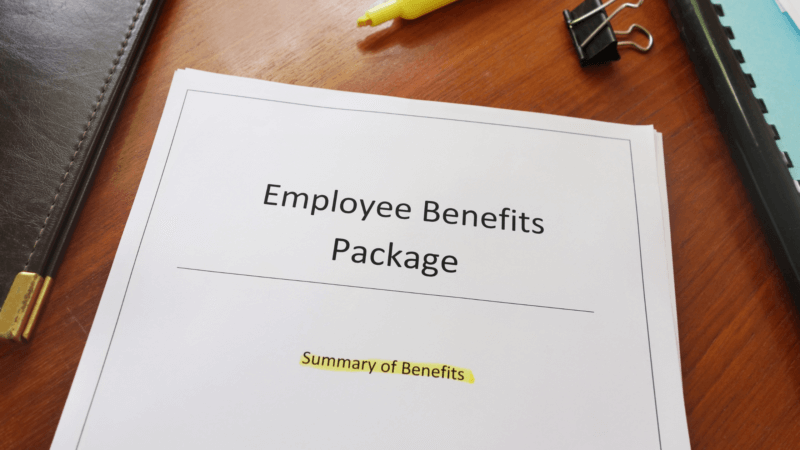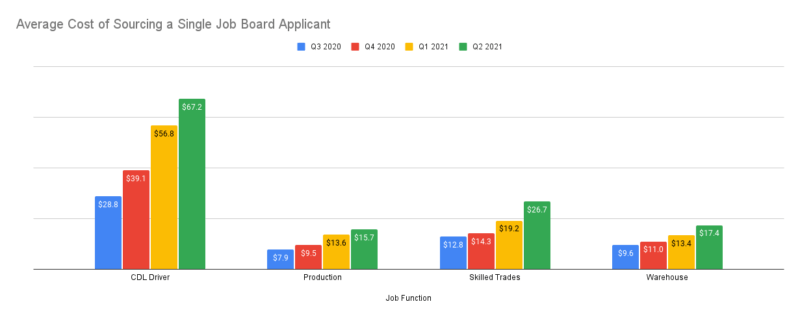Why direct hire makes sense in today’s industrial labor market
October 27, 2019
For many employers, temp-to-hire positions are appealing. On paper they see less overhead and the ability to “try before you buy”. But once you unpack these so-called benefits, especially in the industrial market, they aren’t as appealing as they first appear. And some could be downright harmful to your company.
The industrial market
In 2019 national unemployment rate was 3.6%—the lowest level in nearly 50 years. For industrial workers, that number is often even lower. Manufacturing saw an unemployment rate of 3.2%. Construction just 1.1%.
And many of these same industries are in the midst of major growth. This year, the US experienced the largest growth in manufacturing jobs in 30 years. And other industries, like warehouse and trucking are contending with a shortage of qualified employees.
So you’ve got industry growth, plus a shortage of qualified candidates. And that equals a highly competitive landscape, where employers are all vying for the same small pool of qualified candidates. Now, if you were that sought-after employee, which job would you choose: a temp positions that promised to hire you if you “work out” or a company offering a direct hire job with benefits?
Exactly.
But prospective employees aren’t the only ones who will benefit from a direct hire. There are plenty of bonuses for your company too.
Better candidates, better employee retention
In a tight market for industrial workers with high turnover, the best candidates will have their pick of jobs. But, by offering a more attractive direct-hire package, you also have the power to end up with the most qualified candidates. Want to be even more attractive to job-hunters? Try offering a signing bonus or other benefits.
And this doesn’t have to necessarily change your bottom line. For some employees, a signing bonus could be a gas card to help them get to work. And, for many, non-monetary benefits like workplace culture or on-the-job training give companies the edge.
In a WorkStep survey on employee retention, industrial workers cited things like a company’s “family atmosphere” or “opportunity for advancement” as reasons they’d “never want to leave” their jobs. And “lack of training” and “no 401k” came up as reasons to leave in the next 30 days or for a better opportunity.
Offering direct-hire positions allows your company to point out all the benefits of working there long term, whereas temp roles are much more driven by the hourly wage. The result? With direct hire, you attract more qualified candidates and hire more invested employees, who are much more likely to stick around. And that’s a win for everyone.
The hidden cost of temporary workers
Hiring a full time employee is an investment. And not just salary. Once you add in salary, employment taxes, and benefits, estimates put the true cost of an employee at around 1.25 the cost of their actual salary. So hiring a temporary employee must reduce those associated costs, right? The short answer: usually not.
For one thing, staffing agencies typically mark up the hourly wages on their hires 45-55% to cover their recruitment and operating costs. That means, you’ll likely be paying $21/hour for a worker who’s only taking home $14/hour. Then, even if the employee turns out to be a great fit, you’ll have to pay an additional conversion fee to hire them full time.
Then there’s all those non-monetary costs associated with temporary workers: lower morale, lower quality, lower company loyalty. These are harder to attach numbers to, but also impact the bottom line, driving up turnover, which drives up costs.
The industrial context already has a high average rate of turnover, often reported to be around 20% for manufacturing companies. But if you break down the numbers by temporary and contract workers, you’ll see the turnover rate is around 386% with an average duration of less than 12 weeks. Ouch.
The takeaway? The higher the turnover rate, the higher the cost of recruiting new employees.
And job seekers are much more likely to leave a temporary placement for a direct-hire position. So, while direct-hire may seem like a bigger cost at the outset, it could actually save your company money in the long run.
Sure, “try before you buy” is a nice idea. But don’t forget, employees are trying your company on for size too. And, by the time you decide to convert your most valuable temp employees to FTEs, chances are they’ve at least investigated other opportunities.
Tune into your frontline with WorkStep
With the frontline employee engagement platform that delivers the real-time insights you need to take action, retain your workforce, and drive your business forward.
Put your resources where it matters
When it comes to the true costs of hiring, context is everything. When you consider the low unemployment rate, cost of hiring and recruiting, and the major labor shortages in industrial jobs, hiring people for temp roles simply doesn’t make sense most of the time. It’s much better to put those resources towards recruiting, training, and retaining the right workers.
Overall it becomes clear pretty quickly that reducing costs is much more about hiring and retaining the right workers. The good news? Finding the right people doesn’t have to drive up your recruiting costs. By using a service like Workstep, employers can access an even greater pool of qualified candidates, including those who are currently employed or on the lookout for a better opportunity. Find out how WorkStep can help you find and retain the right candidates for your business.
Dan Johnston, Co-Founder & CEO | dan@workstep.com



